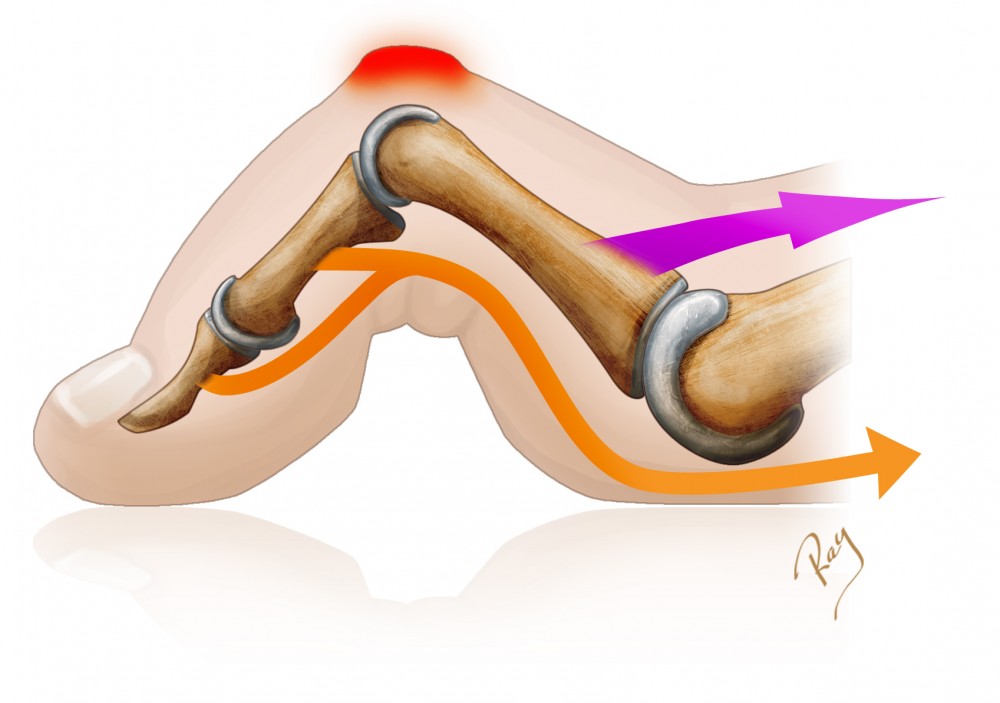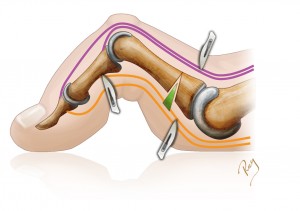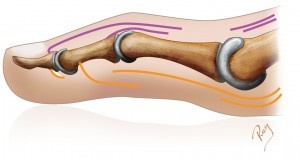What is it?
Hammertoe is a common disorder of the toes mainly affecting women over the age of 50. Based on the shape of the toes, it is referred to as a claw or hammer deformity, depending on the joints affected. With the development of knowledge on the subject, this classification is gradually losing its relevance and the focus is now on determining the flexible, semi-rigid or rigid nature of the deformity, depending on the ability of the toe to easily recover its normal position.
The toe is normally in the extended position of its own joints and is essentially dependent on the balance of the tendons in the foot. Tendons attached to the phalanges ensure the mobility of the different joints and, via traction, these allow the flexion or extension of each joint. It is a delicate balance in which each tendon must receive compensation from the others so the toe remains in its normal resting position.
If one of these tendons is more powerful or has simply become shortened, a deformity is soon observed in flexion or extension positions due to the imbalance between the tendons and the body’s inability to compensate for the retraction. The shape of the toe will then depend on the tendon(s) affected.
Most often, the first sign is a retraction of the toe’s flexor muscles, which will trigger a flexion of the first interphalangeal joint. A deformity of the metatarsophalangeal joint may develop after this, at the base of the toe, and this is what gives the toe its characteristic hammer-like shape. In this position, the toe will rapidly feel uncomfortable when wearing shoes due to the excess pressure between the interphalangeal joint and the shoe. A corn (or callus), which is basically a thickening of the skin to protect the toe from this pressure (see Fig. 1), will then develop.



